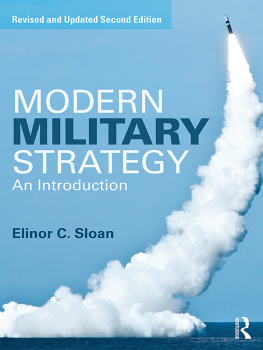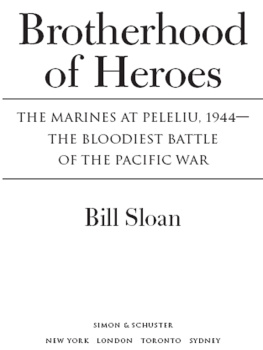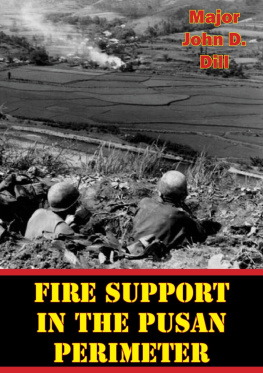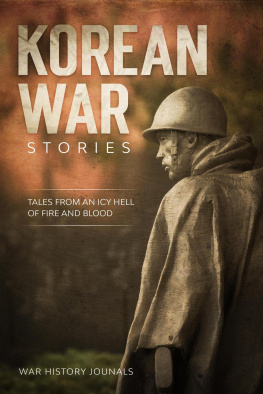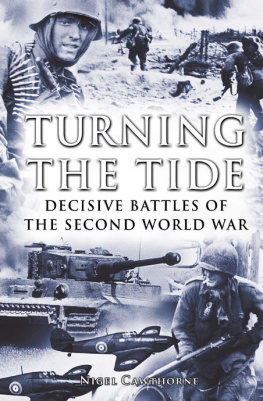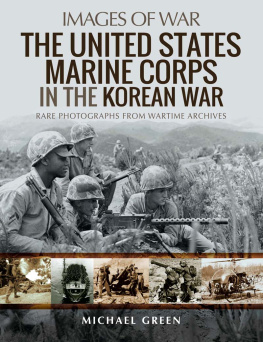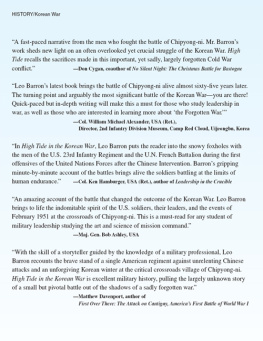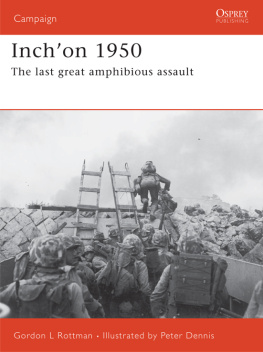
ALSO BY BILL SLOAN
The Ultimate Battle:
Okinawa 1945The Last Epic Struggle of World War II
Brotherhood of Heroes:
The Marines at Peleliu, 1944The Bloodiest Battle
of the Pacific War
Given Up for Dead:
Americas Heroic Stand at Wake Island
JFK: Breaking the Silence
JFK: The Last Dissenting Witness
Elvis, Hank, and Me:
Making Musical History on the Louisiana Hayride
(with Horace Logan)
The Other Assassin (fiction)
The Mafia Candidate (fiction)

THE DARKEST SUMMER
PUSAN AND INCHON 1950:
THE BATTLES THAT SAVED SOUTH KOREA
AND THE MARINESFROM EXTINCTION

BILL SLOAN


Simon & Schuster
1230 Avenue of the Americas
New York, NY 10020
www.SimonandSchuster.com
Copyright 2009 by Bill Sloan
All rights reserved, including the right to reproduce this book or portions thereof in any form whatsoever. For information address Simon & Schuster Subsidiary Rights Department, 1230 Avenue of the Americas, New York, NY 10020.
First Simon & Schuster hardcover edition November 2009
SIMON & SCHUSTER and colophon are registered trademarks of Simon & Schuster, Inc.
For information about special discounts for bulk purchases, please contact Simon & Schuster Special Sales at 1-866-506-1949 or business@simonandschuster.com.
The Simon & Schuster Speakers Bureau can bring authors to your live event. For more information or to book an event contact the Simon & Schuster Speakers Bureau at 1-866-248-3049 or visit our website at www.simonspeakers.com .
Designed by Dana Sloan
Maps by Jeff Ward
Illustration credits follow the Index.
Manufactured in the United States of America
10 9 8 7 6 5 4 3 2 1
Library of Congress Cataloging-in-Publication Data
Sloan, Bill.
The darkest summer: Pusan and Inchon 1950: the battles that saved South Koreaand the Marinesfrom extinction / Bill Sloan. 1st Simon & Schuster hardcover ed.
p. cm.
Includes bibliographical references and index.
1. Korean War, 19501953CampaignsKorea (South)Pusan Region. 2. Inchon Landing, Inchon, Korea, 1950. 3. United States. Marine CorpsHistoryKorean War, 19501953. 4. Pusan Region (Korea)History, Military20th century. 5. Inchon (Korea)History, Military20th century. I. Title.
DS918.2.P87S56 2009
951.90424dc22 2009015329
ISBN 978-1-4165-7174-2
ISBN 978-1-4165-7593-1 (ebook)
To Alana Alyeene Henderson Sloan
my anchor, my armor, my compass, and the love of my life.
Thanks for being there.
CONTENTS
THE DARKEST SUMMER


CHAPTER 1

S UDDENLY, A N OT -S O -S UDDEN W AR
A S DARKNESS FELL on Saturday, June 24, 1950, it was party time in Seoul, capital of the fledgling Republic of South Korea. The afternoon had been oppressively hot and humid, but by dusk, storm clouds were gathering above the mountains to the north, and a celebratory mood, nurtured by hopes of rain, blossomed among the ancient citys 1.5 million residents.
A bountiful rice harvest depended on the torrential downpours of the summer monsoon season. Without them, famine would sweep like a plague across the Korean peninsula, one of the poorest and most primitive areas of Asia. The spring had been unseasonably dry, but now it appeared certain that the indispensable rains were on their way.
In anticipation, Republic of Korea Army headquarters had authorized fifteen-day leaves for thousands of enlisted men to allow them to help their families in the rice paddies. Many other troops in the ROK defensive force stationed at the 38th Parallelthe line, just over thirty-five miles north of Seoul, that divided South Korea and the Communist Northhad been given the weekend off as a reward for serving through months of hostile incidents and false alarms along the frontier. These were comforting, perhaps necessary, gestures toward the troops, but their effect was to leave fewer than a third of the 38,000-man ROK force assigned to border defense on duty at the parallel.
The Republic of Korea Army brass, meanwhile, were celebrating the opening of a new officers club in Seoul, where they were joined by virtually all the American officers of the 500-member Korean Military Advisory Group (KMAG), charged with helping the ROKs achieve combat readiness. Later in the evening, the Americans would return the favor by hosting the South Koreans at the regular Saturday night dance at the lavish KMAG officers open mess. Having completed his tour of duty, Brigadier General William L. Roberts, retiring commander of the KMAG, had sailed for the States that very afternoon. Otherwise, he doubtlessly would have been at the center of the festivities.
In embassy bars and other elite venues, the 2,000 members of the American diplomatic mission in Seoul also came out to play. Since the arrival of the first Americans in South Korea in 1945, the mission had grown into the largest such U.S. contingent in the world, but only a handful of the staff was involved in military matters. Most were there to support the struggling economic and political systems of a nation that, after generations of outside control, had virtually no experience in administering its own affairs.
The diplomats cocktail conversations focused on the recent visit to Seoul and the 38th Parallel by John Foster Dulles, U.S. ambassador to the United Nations. They joked about Dulless remarks on South Koreas progress toward responsible representative government and a vitalized economy, both still distant goals. There was almost no mention of rice harvests or monsoons, much less the possibility of a North Korean invasion.
On the eve of his retirement as head of the KMAG, General Roberts had boasted in an interview with Time magazine of his groups success in molding the ROK military into a force capable of meeting any threat posed by the North Korean Peoples Army (NKPA). The South Koreans have the best damn army outside the United States, Roberts had said flatly. He also maintained that tank warfare was impossible among the narrow roads and boggy rice paddies of Korea. His superiors in Washington and Tokyo took the general at his word, despite damning evidence to the contrary. He could not have been more wrong.
In terms of sheer numbers, the ROK Army was actually a bit larger than its northern counterpart, with total manpower of about 145,000nearly 50 percent of whom would become casualties within the first six weeks of the war. It encompassed eight divisions, half of them clustered along the 38th Parallel or in the vicinity of Seoul, but most ROK infantry units were armed with nothing more formidable than M-1 rifles, light machine guns, and small-caliber mortars. Backing the infantry were five battalions of field artillery, but they were equipped only with obsolete, short-range 105-millimeter howitzers of a type the U.S. Army had scrapped several years earlier.
Next page


